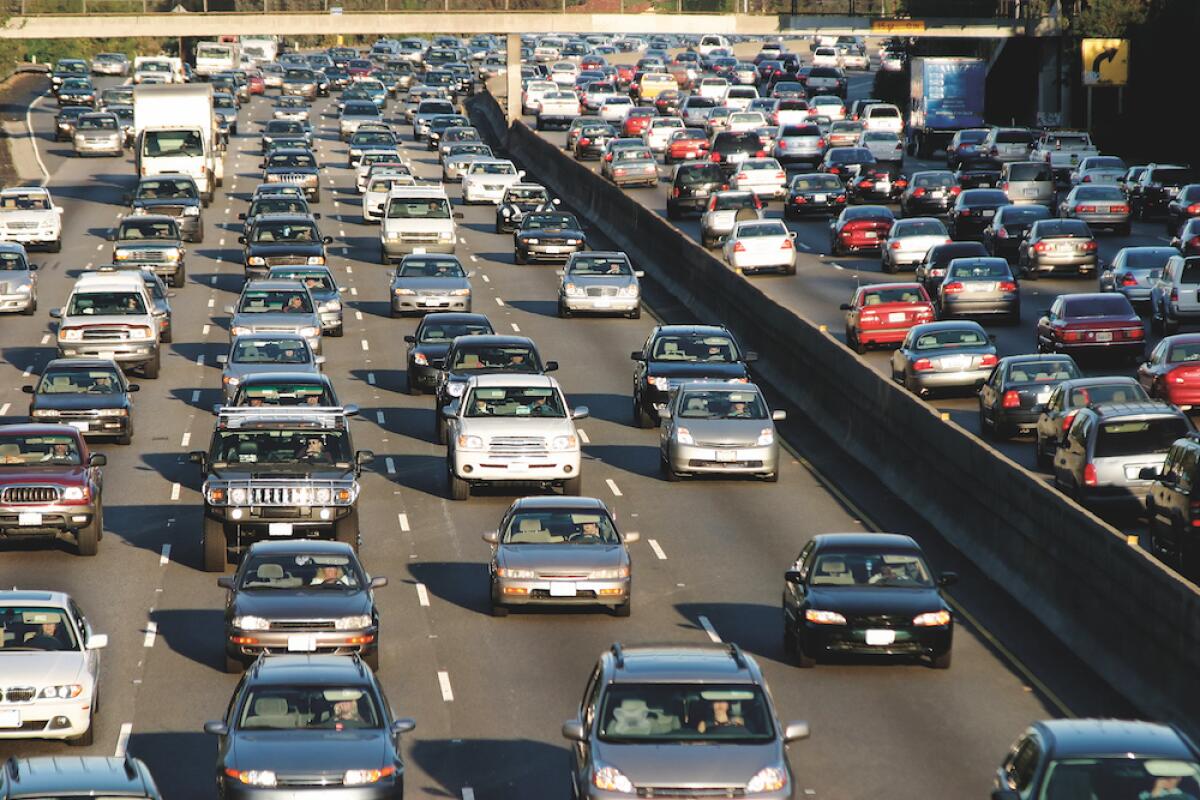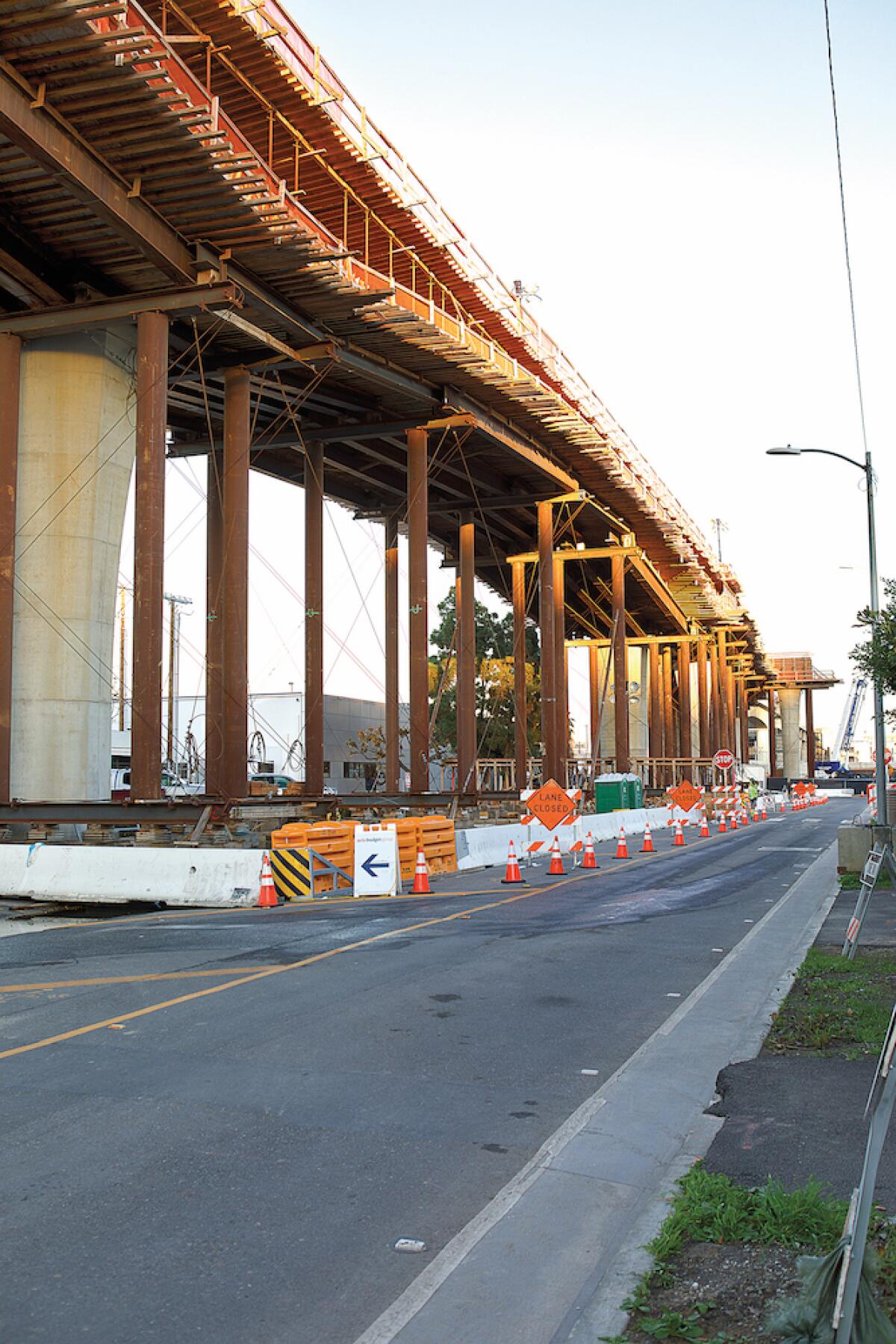Traffic and L.A. Seem Unavoidable – The City of Inglewood has Worked to Change That

Traffic and Los Angeles are so familiarly tied it’s hard to imagine one without the other. This sprawling city and its surrounding regions have been battling congestion for almost a century, trying myriad measures to ease the flow of vehicles with varying success through the 1970s, 80s and 90s, typically by mitigating the inbound and outbound traffic generated by large venues like Dodger Stadium, the Coliseum, the Forum and the Hollywood Park racetrack. The early days of the COVID-19 pandemic teased Angelenos with traffic levels that were cut in half by April of 2020, only to rebound to pre-pandemic levels within a year.
The City of Inglewood is no stranger to managing traffic, with its myriad attractions bringing people from all over the region. By its very design, it has a comprehensive plan in place to make movement in the city easier as its rebirth as a sports and entertainment hub continues apace. From riding the rails to riding a bike, Inglewood is investing big in its infrastructure to make life more pleasant for both its 110,000 residents and the millions of people that are visiting the city each year.
History of Innovation
From 1967 to 1999, Inglewood’s Forum entertainment and sports arena was home to the NBA’s Los Angeles Lakers and the NHL’s Los Angeles Kings, with all the fan traffic that implies. Meanwhile, the nearby Hollywood Park Racetrack had been attracting huge crowds for decades.
“When the racetrack was doing 43,000 people, on average, six days a week, you had the Lakers at the Forum with 17,500, inbound, both occurring at the same time, during rush hour,” said Mayor of Inglewood James T. Butts Jr. “So, I think it’s something this city has dealt with for quite some time. And we’ve always come up with innovative solutions.”
For much of that era Butts was an Inglewood police officer, ultimately being promoted to the city’s Deputy Chief of Police. His law enforcement career included assignments as a patrolman, motorcycle officer, Narcotics Division Commander, SWAT Officer, Team Leader and Commander and as a Metro undercover officer, so he witnessed firsthand the traffic issues intrinsic to a city that attracts millions of visitors each year – and he saw which solutions did and did not work.
The Lakers and Kings left the Forum in 1999, and the final race that was run at Hollywood Park was in 2013. So, after becoming mayor in 2011, Butts prioritized renewing the City’s decayed infrastructure as central to redeveloping Inglewood back into being the “City of Champions” he had known as a young policeman. He negotiated the renovation and reopening of the Forum, brought the SoFi Stadium’s construction and its surrounding Hollywood Park mega-development to Inglewood, and negotiated to bring the Clippers to Inglewood. But he also paid attention to bread-and-butter issues necessary to attract business, such a street repairs, tree trimming and laying miles of underground fiber optic cable. Simultaneously, he spearheaded the reconstruction of more miles of roadway than the city had managed in the prior 30 years combined.

Envision Inglewood
The City of Inglewood announced its “Envision Inglewood” study in 2018. This transportation infrastructure plan is aimed at updating Inglewood’s “mobility plan, programs and infrastructure to connect and move people across a multimodal transportation environment to support the City’s sustainable, world-class transformation,” according to its website.
Such is Butts’ commitment to Inglewood’s infrastructure that he was elected as Inglewood’s first representative of the Southwest Corridor cities on the board of L.A.’s powerful Metropolitan Transportation Authority in 2014. He was selected as its chairperson in 2019 and helped to steer commitment of close to $1 billion towards mass transit needs in the South Bay.
Thinking creatively, Butts also entered into public/private electronic billboard partnerships to help fund the city’s operations while also generating rising profits, split 50/50 between the city and its private partner. The vision for this public/private partnership predated the securing of the professional sports teams that are now committed to Inglewood.
Today millions will view the public service messages supporting the city’s youth, schools, libraries and infrastructure renewal along with the paid advertisements displayed.
“This allowed us to enter into a very aggressive infrastructure renewal,” Butts explained.
The City of Inglewood’s infrastructure improvements are multi-pronged, covering everything from sewer systems to tree trimming. But its numerous transportation initiatives all have a single overarching goal: to reduce the city’s vehicular traffic by offering viable alternatives and thus elevate the city’s livability for residents and its business-friendliness to investors.
On the Rails
L.A. Metro’s new Crenshaw/LAX Line, denoted as Metro’s “K” line, which will connect South L.A. to the South Bay and Los Angeles International Airport (LAX), is set to open in late 2022. The 8.5-mile light rail line will include three new stations in Inglewood: the Fairview Heights station near the intersection of Florence Avenue and West Boulevard; the Downtown Inglewood station near the intersection of Florence Avenue and La Brea Avenue; and the Westchester/Veterans station near the intersection of Florence Avenue and Hindry Avenue.
The Crenshaw/LAX Line will not only better connect Inglewood to the wider L.A. Metro network but will also make traveling the four miles to and from LAX much simpler – and even more so once LAX’s Automated People Mover, which will connect to the line, is completed in 2023.
The centerpiece of Envision Inglewood is the city’s own proposed people mover that will connect the Crenshaw/LAX Line’s Downtown Inglewood station to the city’s flourishing entertainment district and major employment, commercial, and housing centers. Joining to the Metro rail system in this way is crucial to fully unlocking the opportunities associated with Inglewood’s many new developments centered around the 300-acre Hollywood Park campus, which occupies the site of the old racetrack.
The proposed Inglewood Transit Connector is planned as a 1.6-mile fully elevated and automated transit system that would carry passengers south to a trio of stations serving the Forum, SoFi Stadium and Hollywood Park, and the L.A. Clippers’ future Intuit Dome home. The project, set to begin operations in 2027, leads up to the 2028 Summer Olympics arriving in Inglewood, including the opening ceremony and soccer games at the SoFi Stadium, basketball at the Intuit Dome, and gymnastics events at the Forum.
“We have been working for a couple of years now on the design [and] environmental impact review,” said Butts. “This solution is estimated to move about 11,000 to 12,000 people an hour.”
By closing the critical last-mile gap to the countywide Metro rail system, the Inglewood Transit Connector will reduce vehicle miles traveled and related greenhouse gas emissions, thus improving air quality throughout the city and region.
Mobility Plan
The City of Inglewood recently updated its Mobility Plan to best prepare for emerging and future mobility demands as a world-class destination. The plan includes enhanced pedestrian and bike infrastructure, intelligent transportation system upgrades, physical improvements to transportation infrastructure, rideshare and traffic demand management strategies, and improvements to alternative forms of transportation.
The Mobility Plan’s enhanced parking strategies are already evident, focused on easing traffic and parking concerns during major events at the 70,000-seat SoFi Stadium, home to the NFL’s Rams and Chargers. In July 2021, the City of Inglewood announced its IPark&Go remote parking and shuttle program.
“We’ve partnered with a company called LAZ Parking to secure leases with surrounding hotels [and] Southwest College so that people can do an online parking reservation … and then they get shuttled to the venue,” said Butts. “We also do the same thing with parking structures here in the city … This arrangement has so far netted the city about $35,000 a month. At the same time, it eases congestion.”
Comprising over 4,000 parking spaces, the IPark&Go service provides convenient, affordable, and safe parking options. Its shuttle buses take event attendees to the City of Inglewood’s Intermodal Transit Facility, right next to SoFi Stadium, and back, typically within 30 minutes or less each way.
On game days, a free shuttle bus service also connects L.A. Metro’s Hawthorne/Lennox Station, on the C Line, to SoFi Stadium. Shuttles run every five to eight minutes for roughly three hours before kick-off and approximately 1.5 hours after each game. Additionally, GTrans runs line 7X from Harbor Gateway Transit Center in Gardena, with free parking and just a $4 round-trip fare to SoFi. The stadium is also well served by multiple Metro bus lines, creating a regional traffic solution during events.
Inglewood has streamlined the game day rideshare experience by establishing dedicated drop-off and pickup locations near SoFi Stadium for rideshares, taxis, and car services. It has also made it easy to pedal or simply walk to SoFi, with pedestrians and bicyclists welcome at any gate, plus designated pedestrian paths, bike racks, and bicycle valet stations. Hollywood Park includes miles of winding, tree-lined paths where visiting fans can walk off those stadium chili dogs among locals out strolling, cycling and jogging.
Locals’ Focus
Envision Inglewood also seeks to return the city’s downtown to its former status as the heart of local commercial and community activity. The city recently adopted a transit-oriented development plan for the neighborhood which includes modified zoning and parking regulations, with a focus on transforming Downtown Inglewood into a pedestrian-friendly hub for shoppers, diners and residents drawn to its new mixed-use retail and residential developments.
All the while, Inglewood also continues to refine traffic control and management strategies and policy regulations to safeguard its residents from any inconveniencing impacts from existing and future events and developments in the city. These include its Citywide Residential Permit Parking Program which reserves street parking for residents, while event parking is restricted to designated lots.
Other neighborhood protection plans include reconfiguration of streets or directional orientation before and after major events, and new striping and curb markings.
In a region almost synonymous with automobile traffic, the City of Inglewood is ensuring that its transportation infrastructure keeps pace with its stunning economic renaissance through forward-thinking initiatives that benefit residents, visitors, and neighborhood businesses alike.